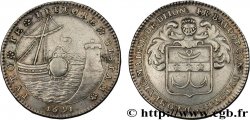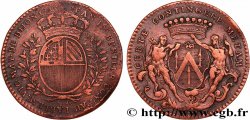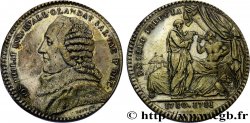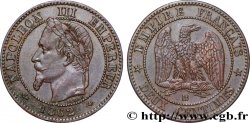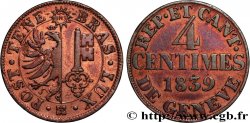E-auction 214-140294 - fjt_059523 - DIJON (MAIRES DE ... et divers) Nicolas Labotte 1713
Sie müssen angeschlossen sein und von cgb.fr genehmigt werden, um in einer E-Auktion teilzunehmen.Melden Sie sich an, um zu wetten..Die Kontobestätigungen sind innerhalb von 48 Stunden nach Ihrer Anmeldung gemacht.Warten Sie nicht bis die letzten zwei Tage vor dem Abschluss eines Verkaufs, um Ihre Registrierung abzuschließen. Klickend "BIETEN" verpflichten Sie sich vertraglich, diesen Artikel zu kaufen und Sie nehmen ohne Reserve die allgemeinen Verkaufsbedingungen für den e-auctions zu cgb.fr an.
Der Verkauf wird an der Zeit auf der Übersichtsseite angezeigt geschlossen werden. Angebote, die nach der Schließung Zeit empfangen sind, werden nicht gültig.
Bitte beachten Sie, dass die Fristen für die Einreichung Ihres Angebots auf unsere Server können variieren und es kann zur Ablehnung Ihres Angebots entstehen, wenn es in den letzten Sekunden des Verkaufs gesendet wird. Die Angebote sollen mit ganzer Zahl ausgeführt sein, Sie können Kommas oder des Punktes in Ihrem Angebot nicht erfassen. Bei Fragen klicken Sie hier, um einen Blick auf die FAQ E-Auktionen.
KEINE ANSCHAFFUNGSKOSTEN FÜR DIE KÄUFER.
KEINE ANSCHAFFUNGSKOSTEN FÜR DIE KÄUFER.
| Schätzung : | 28 € |
| Preis : | 19 € |
| Höchstgebot : | 20 € |
| Verkaufsende : | 22 Mai 2017 17:42:00 |
| Bieter : | 6 Bieter |
Type : Nicolas Labotte
Datum: 1713
Metall : Kupfer
Durchmesser : 30,5 mm
Stempelstellung : 6 h.
Rand lisse
N° im Nachschlagewerk :
Vorderseite
Titulatur der Vorderseite NON EST SINE LVMINE ROBVR..
Beschreibung Vorderseite Armes de Dijon dans une couronne de laurier ; à l’exergue : .1713..
Rückseite
Titulatur der Rückseite NICOLAS. LABOTTE. TRER. DE. FRANCE. VICONTE. MAIEVR. DE. DIION..
Beschreibung Rückseite Armes de gueules à une tour d’or accostée de deux étoiles lambrequinées et soutenues par deux lévriers.
Kommentare
Nicolas Labotte, trésorier de France, fut élu le 20 juin 1711. Il est mort en fonction le 28 juillet 1714. Il porte de gueules à une tour d’or accostée de deux étoiles.
Les maires de Dijon
Dès l’époque de la naissance de la féodalité, la ville de Dijon possédait un maire et en général vingt magistrats municipaux, ou échevins. Ces magistrats sont confirmés en 1187, lorsqu’une charte de commune est accordée par le duc Hugues III. En 1192, pour la première fois, le maire dijonnais est élu.
A la fin du XIIIe siècle, ce maire prend le titre de vicomte maïeur, confirmé en 1477-1479 par Louis XI, qu’il gardera jusqu’en 1789. Depuis la fin du XVe siècle (1491), la charge de vicomte maïeur est anoblissante ainsi que celle d’échevin à compter du XVIe siècle. Le vicomte maïeur avait le droit de haute, moyenne et basse justice, le droit de scel et de visite. Les clefs de la ville lui sont confiées et il dirige les archers ainsi que les compagnies des sept quartiers, cette fonction militaire étant importante jusqu’au XVIIe siècle.
Fonction élective, le vicomte maïeur est élu par les habitants, ni mendiants, ni étrangers, qui payent la taille, en général la veille de la Saint-Jean. Cette élection a lieu sur le parvis de l'église saint Philibert. A partir de 1669, il est permis au maire de porter "une robe longue de satin plein, de couleur violet, doublée de satin rouge cramoisi, comme le prévôt des marchands de Lyon, avec chaperon de même étoffe et couleur bordée d’hermine" afin de se distinguer des habitants.
En 1692, la fonction de vicomte maïeur est transformée en office héréditaire tandis que l’élection n’est plus alors qu’une confirmation du choix royal fait par le gouverneur au nom du roi.
Voir leur liste complète à http://fr.wikipedia.org/wiki/Liste_des_maires_de_Dijon.
Nicolas Labotte, treasurer of France, was elected on June 20, 1711. He died in office on July 28, 1714. It bears a gules tower flanked by two stars.
The mayors of Dijon From the time of the birth of feudalism, the city of Dijon had a mayor and generally twenty municipal magistrates, or aldermen. These magistrates were confirmed in 1187, when a municipal charter was granted by Duke Hugh III.. In 1192, for the first time, the mayor of Dijon was elected.
At the end of the 13th century, this mayor took the title of viscount mayor, confirmed in 1477-1479 by Louis XI, which he kept until 1789. Since the end of the 15th century (1491), the position of viscount mayor has been ennobling, as has that of alderman since the 16th century.. The Viscount Mayor had the right of high, middle and low justice, the right of seal and visitation. The keys to the city were entrusted to him and he commanded the archers as well as the companies of the seven districts, this military function being important until the 17th century..
An elective function, the Viscount Mayor is elected by the inhabitants, neither beggars nor foreigners, who pay the tax, generally on the eve of Saint John.. This election takes place on the forecourt of the Saint Philibert church. From 1669, the mayor was allowed to wear \\\"a long robe of full satin, purple in color, lined with crimson red satin, like the provost of the merchants of Lyon, with a chaperon of the same fabric and color edged with ermine\\\" in order to distinguish himself from the inhabitants..
In 1692, the function of Viscount Mayor was transformed into a hereditary office while the election was then only a confirmation of the royal choice made by the governor in the name of the king..
See their full list at http://fr. Wikipedia. org/wiki/List_of_mayors_of_Dijon
Les maires de Dijon
Dès l’époque de la naissance de la féodalité, la ville de Dijon possédait un maire et en général vingt magistrats municipaux, ou échevins. Ces magistrats sont confirmés en 1187, lorsqu’une charte de commune est accordée par le duc Hugues III. En 1192, pour la première fois, le maire dijonnais est élu.
A la fin du XIIIe siècle, ce maire prend le titre de vicomte maïeur, confirmé en 1477-1479 par Louis XI, qu’il gardera jusqu’en 1789. Depuis la fin du XVe siècle (1491), la charge de vicomte maïeur est anoblissante ainsi que celle d’échevin à compter du XVIe siècle. Le vicomte maïeur avait le droit de haute, moyenne et basse justice, le droit de scel et de visite. Les clefs de la ville lui sont confiées et il dirige les archers ainsi que les compagnies des sept quartiers, cette fonction militaire étant importante jusqu’au XVIIe siècle.
Fonction élective, le vicomte maïeur est élu par les habitants, ni mendiants, ni étrangers, qui payent la taille, en général la veille de la Saint-Jean. Cette élection a lieu sur le parvis de l'église saint Philibert. A partir de 1669, il est permis au maire de porter "une robe longue de satin plein, de couleur violet, doublée de satin rouge cramoisi, comme le prévôt des marchands de Lyon, avec chaperon de même étoffe et couleur bordée d’hermine" afin de se distinguer des habitants.
En 1692, la fonction de vicomte maïeur est transformée en office héréditaire tandis que l’élection n’est plus alors qu’une confirmation du choix royal fait par le gouverneur au nom du roi.
Voir leur liste complète à http://fr.wikipedia.org/wiki/Liste_des_maires_de_Dijon.
Nicolas Labotte, treasurer of France, was elected on June 20, 1711. He died in office on July 28, 1714. It bears a gules tower flanked by two stars.
The mayors of Dijon From the time of the birth of feudalism, the city of Dijon had a mayor and generally twenty municipal magistrates, or aldermen. These magistrates were confirmed in 1187, when a municipal charter was granted by Duke Hugh III.. In 1192, for the first time, the mayor of Dijon was elected.
At the end of the 13th century, this mayor took the title of viscount mayor, confirmed in 1477-1479 by Louis XI, which he kept until 1789. Since the end of the 15th century (1491), the position of viscount mayor has been ennobling, as has that of alderman since the 16th century.. The Viscount Mayor had the right of high, middle and low justice, the right of seal and visitation. The keys to the city were entrusted to him and he commanded the archers as well as the companies of the seven districts, this military function being important until the 17th century..
An elective function, the Viscount Mayor is elected by the inhabitants, neither beggars nor foreigners, who pay the tax, generally on the eve of Saint John.. This election takes place on the forecourt of the Saint Philibert church. From 1669, the mayor was allowed to wear \\\"a long robe of full satin, purple in color, lined with crimson red satin, like the provost of the merchants of Lyon, with a chaperon of the same fabric and color edged with ermine\\\" in order to distinguish himself from the inhabitants..
In 1692, the function of Viscount Mayor was transformed into a hereditary office while the election was then only a confirmation of the royal choice made by the governor in the name of the king..
See their full list at http://fr. Wikipedia. org/wiki/List_of_mayors_of_Dijon








 Berichten über einen Fehler
Berichten über einen Fehler Die Seite drucken
Die Seite drucken Teilen meiner Auswahl
Teilen meiner Auswahl Stellen Sie eine Frage
Stellen Sie eine Frage Einlieferung/Verkauf
Einlieferung/Verkauf
 Details
Details
